How to Terrify Everyone with the Fact That You Have a Job
LIFE raised one of the most sensitive issues of the post-war period. During the war years, the gender ratio on the labor market changed considerably: 6 million American women started working for the first time, and most importantly — they were finally allowed into the traditionally ‘male’ professional spheres. It was by default considered that after the victory they will be again occupied by men, and things would go back to how they had been before.
It turned out, ‘like before’ didn’t work out. Women believed in themselves and discovered the benefits of financial independence, so they weren’t keen on going back to the kitchen. Mass media and pop culture tried to remind the rogue ones that a woman is a homemaker, politicians said that working women were neurasthenics losing their sexual identity, but it was too late to stop this process. Female school graduates of the post-war years most often wanted not to get married, but to go to college or get employed at the office. Hundreds of women were leaving their native towns and going to New York, determined to succeed. And while society and the media discussed what was wrong with those women and with the world, LIFE magazine decided to give the floor to the women themselves.
It was considered that after the war the ‘male’ positions will again be occupied by men, and things would go back to how they had been before.

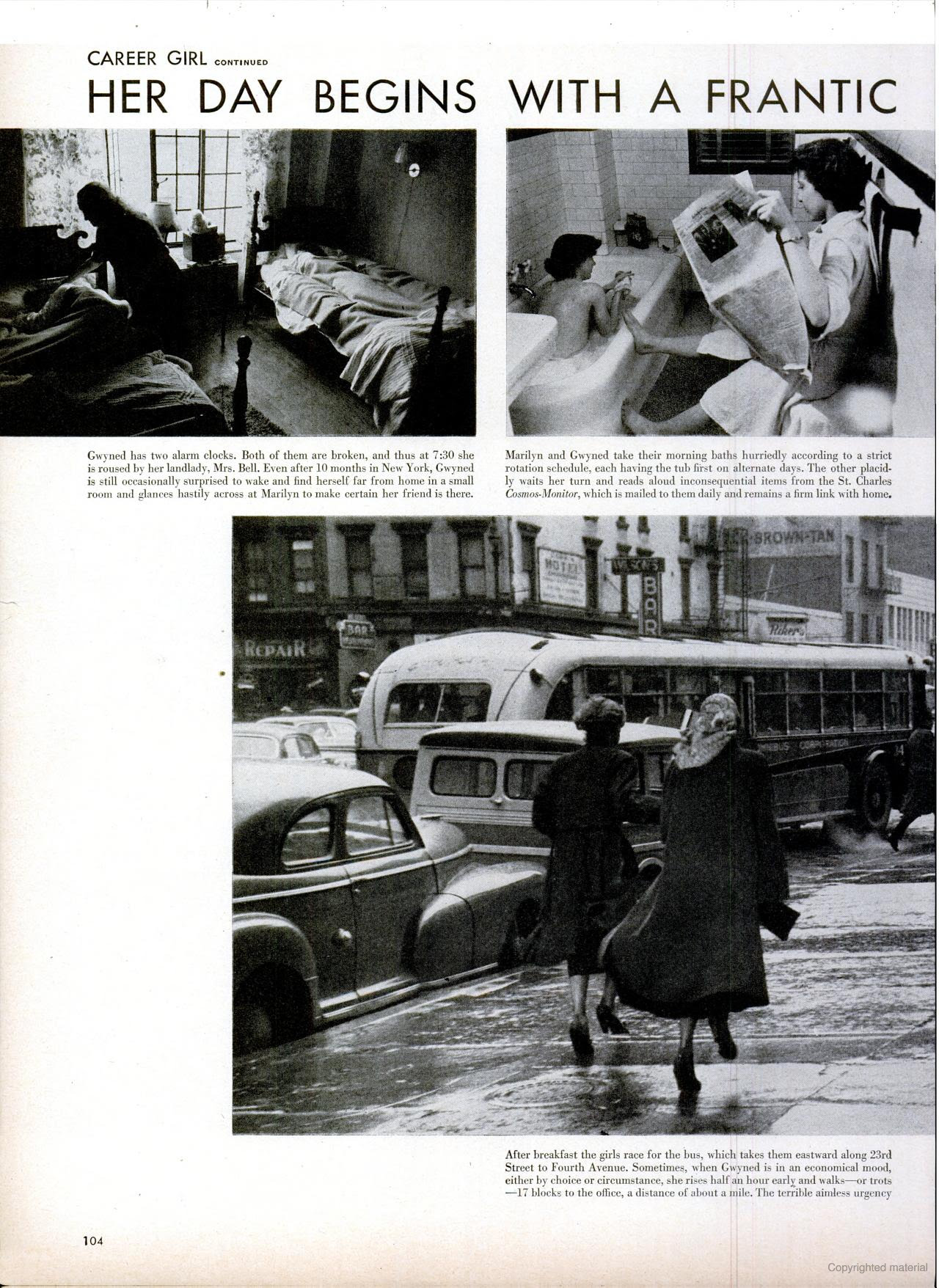
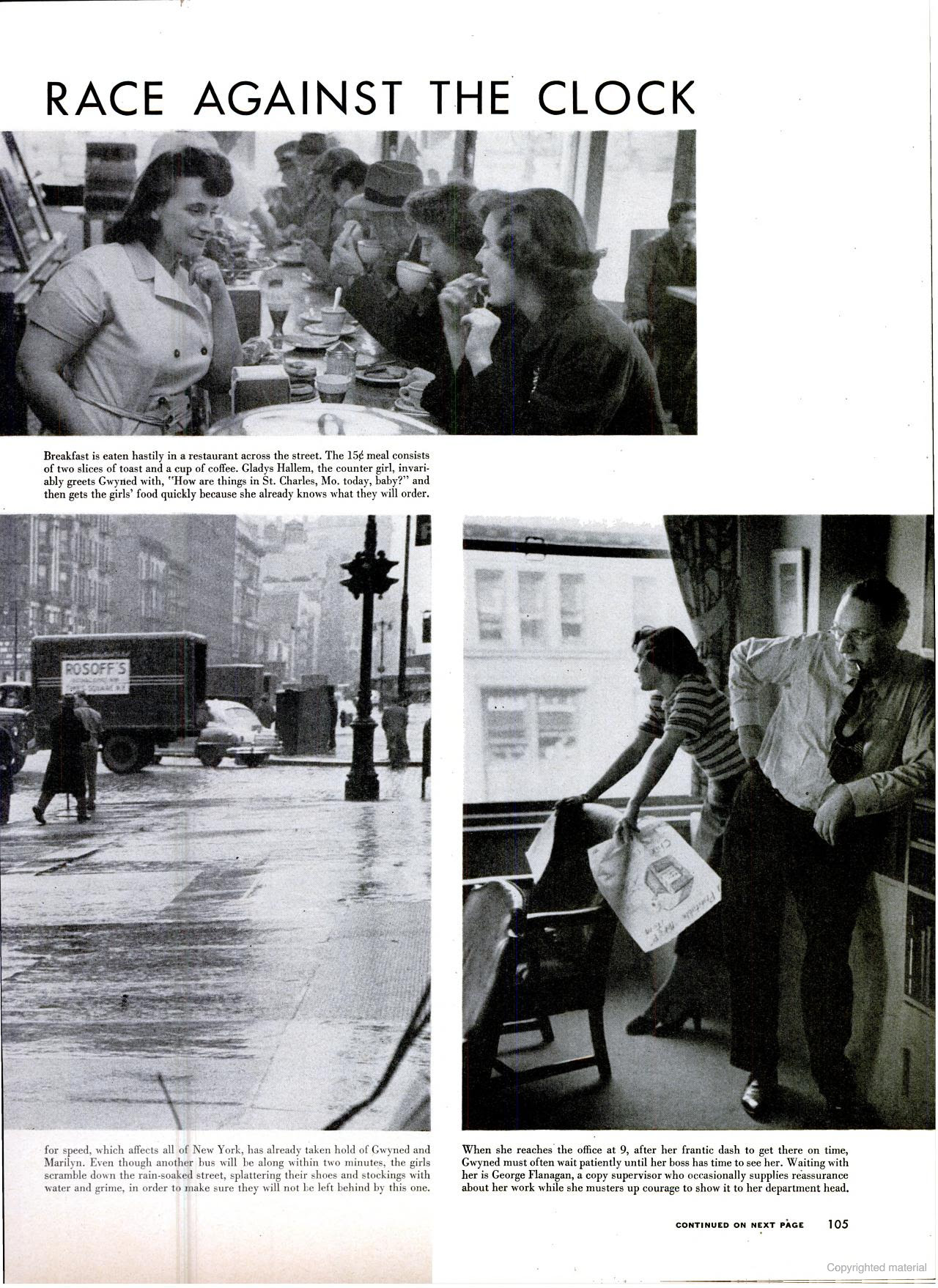
…It took several months to prepare the article. It was decided to publish more than an editorial or an interview, but a photo essay — twelve pages of captioned photographs. LIFE published photo essays before, but they were always staged, with a pre-written script and shooting plan. Photographer Leonard McCombe who took up this project didn’t like staged shoots, but was a genius photojournalist. He thought that the photographs are the most convincing when the characters forget about the camera and stop posing. To achieve that, the photographer should be able to blend into the scenery.
The heroine, 23-year-old Gwyned Filling, was selected from thousands of candidates. It was important to find a prominent, but at the same time, typical representative of ‘young career women’, and Gwyned fit the description perfectly: she grew up in a small town in Missouri, studied journalism and PR at the Michigan university, took a bank loan of $250 and went on to conquer New York. After a month of job interviews, she finally succeeded — she was accepted as a copywriter to an advertising agency for $35 a week. By the time they started making the essay, she had lived in New York for half a year, renting a tiny furnished room together with her friend for $75 a month (the cheapest option that they could find), was paying back the loan and was recently promoted — she was now earning $52 a week and was trusted to write the slogans by herself.
McCombe was only two years older than the heroine and had only recently moved to the States from Britain. And nonetheless, he was already considered a star in LIFE. In 1945, he shot a dramatic photo story about the refugees who poured into post-war Berlin — ethnic Germans from Eastern Europe, who were afraid of the revenge of the victors, so they abandoned their homes and ran away to Germany in great numbers. In 1948, he brought unique photo material from the reservation of Navajo Indians. In 1949, in a Texas supermarket he noticed a colorful cowboy, took several photos of him, and sent them to LIFE — and Philip Morris advertisers saw them right at the time when they were thinking about a new, more brutal image for Marlboro cigarettes for women. This way, thanks to McCombe, a provincial cowboy became famous all over the world, and Marlboro became male cigarettes.
Thanks to McCombe, a provincial cowboy became famous all over the world, and Marlboro became male cigarettes.
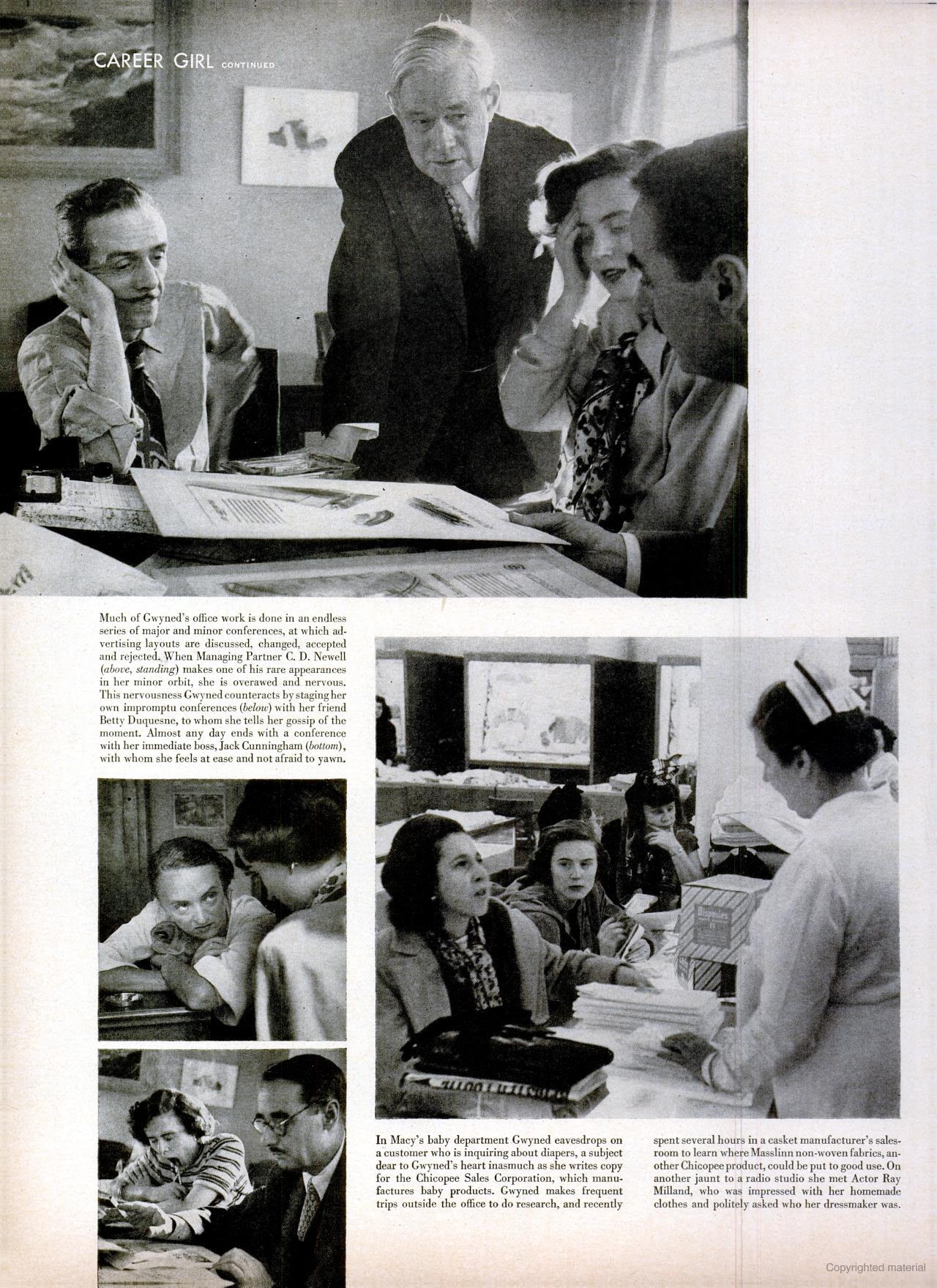
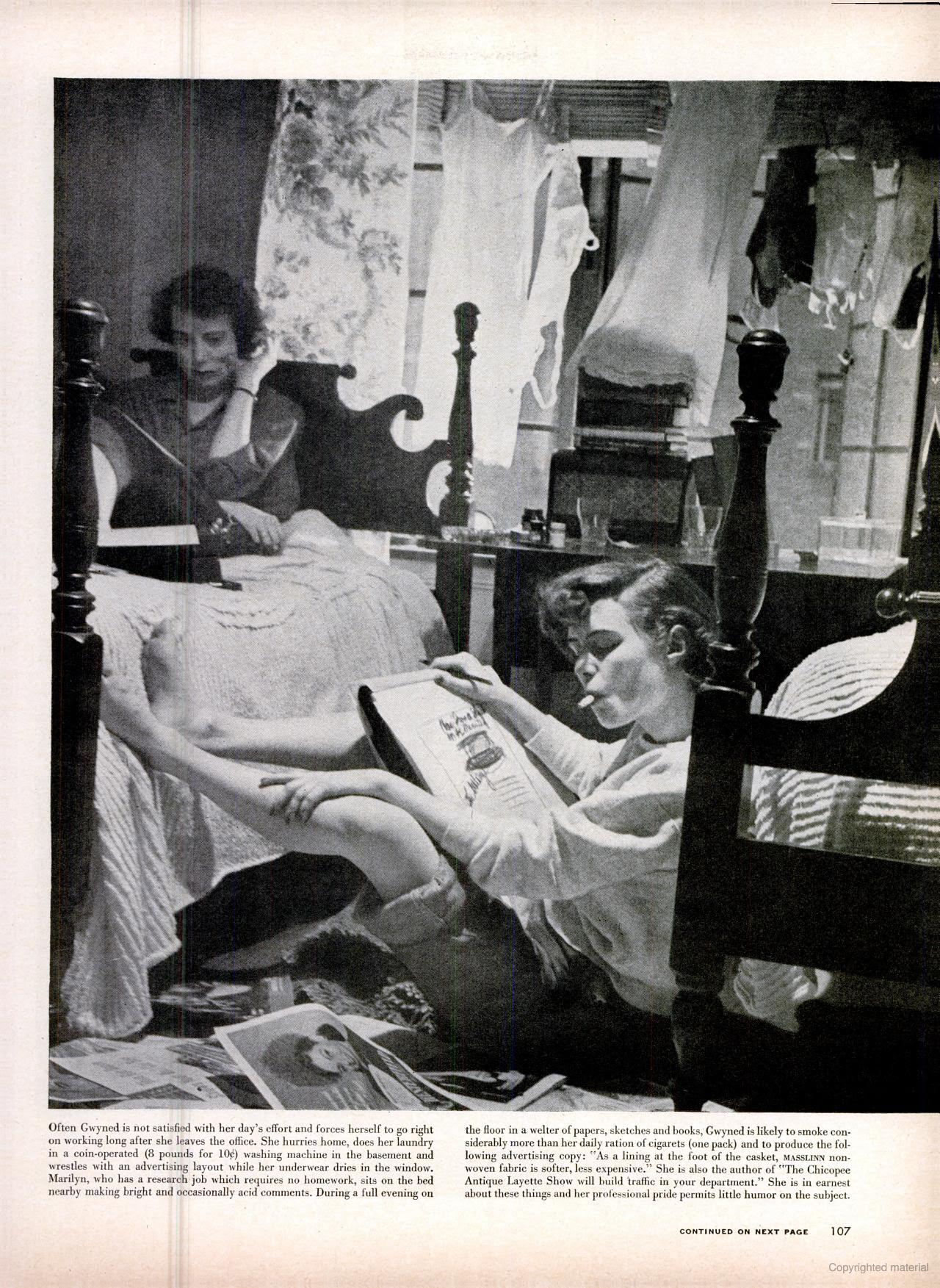
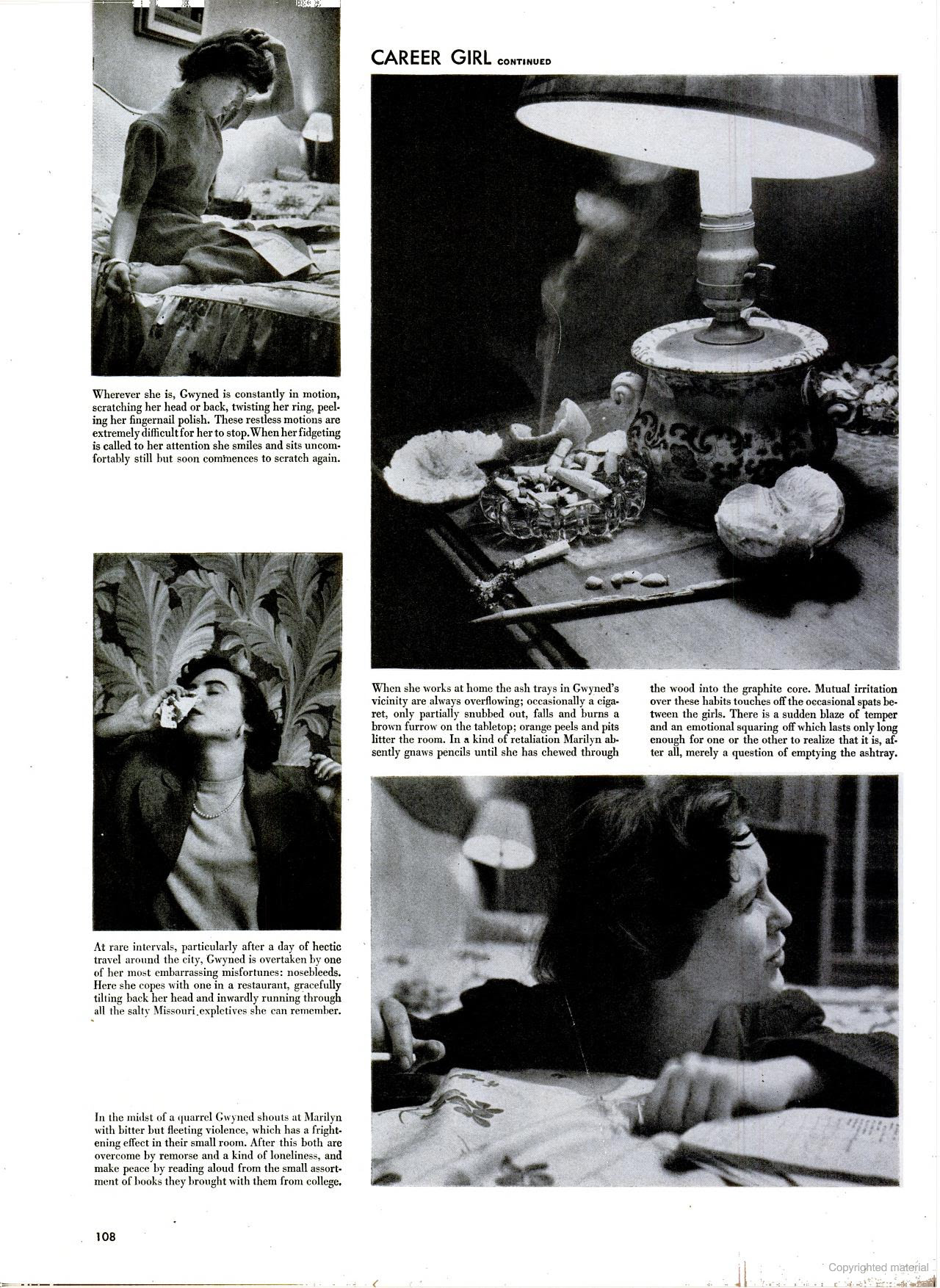
…It took him four weeks to shoot a story on Gwyned Filling, and this entire period he was with her almost all the time. Every day, he accompanied her to the office, to work meetings with colleagues, to her boss’ office, to cafes, to gatherings with friends, even on dates. He practically moved into the room of Gwyned and Merilyn. He took photographs of her laugh, cry, yawn, dressed up, and in a nightgown. In his photographs, she holds hands with a suitor, strokes a teddy cat, and stops a nosebleed. It is rather hard to convince someone not to pay attention to the person with the camera and forget that the photographs will soon be seen by all of America. But if you remain in sight for several weeks, rather soon they will sincerely forget about you and pay no attention to you the way they pay no attention to furniture in their apartment. The photographer later recalled that finally he and Gwyned started feeling like brother and sister, and got so much used to each other’s company that all awkwardness disappeared.
The LIFE issue with Gwyned’s face on the cover was published on May 3, 1948. Thirty out of the four thousand photographs taken were published. The first shot in the story — a room in the morning, one woman is already up and is now waking the other. Then, a photo from the bathroom: Gwyned is taking a bath, her roommate is sitting by her side and reading a newspaper, waiting for her turn. Then, a bus stop. The place where Gwyned always eats (the same thing every day — a coffee and two toasts for 15 cents).
The following several pages are photographs from the office: briefings, staff meetings, discussions of drafts, communications with the clients. When Gwyned leaves work, she often takes a bunch of sketches home and stays up late creating captions, making corrections, and smoking one cigarette after another. She gets carried away and doesn’t notice that the ashtray is full, the cigarette butts are burning through the tablecloth, and Merilyn who is observing it all could kill her. Sometimes, they do indeed have quarrels — stormy, but brief. Five minutes later, they are already putting together something to wear from what they have on hand: the two barely have enough money for food and accomodation, but they are great at creating and sewing fashionable things out of nothing. And since they are the same size, they can switch clothes.
He took photographs of her laugh, cry, yawn, dressed up, and in a nightgown.
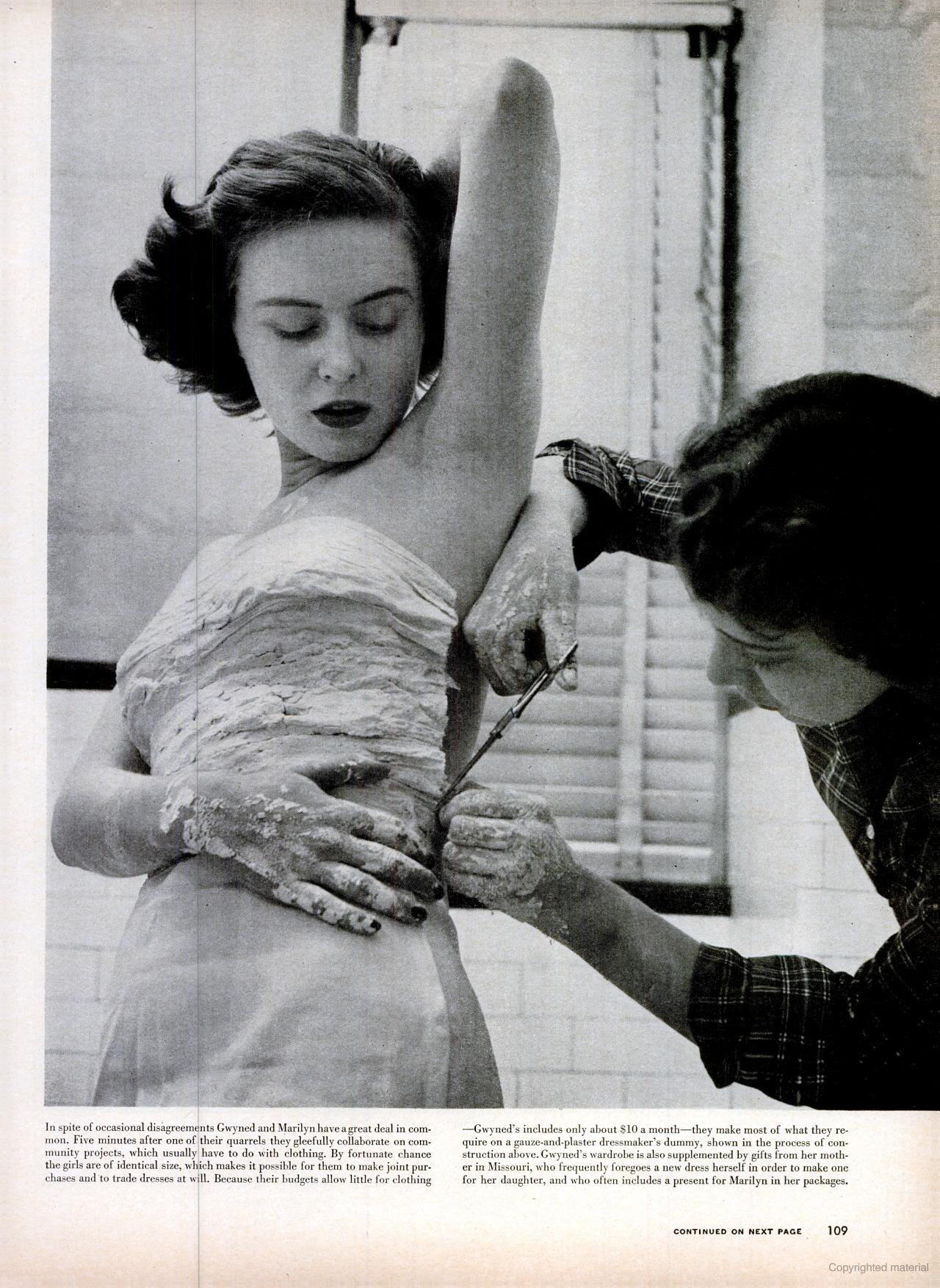
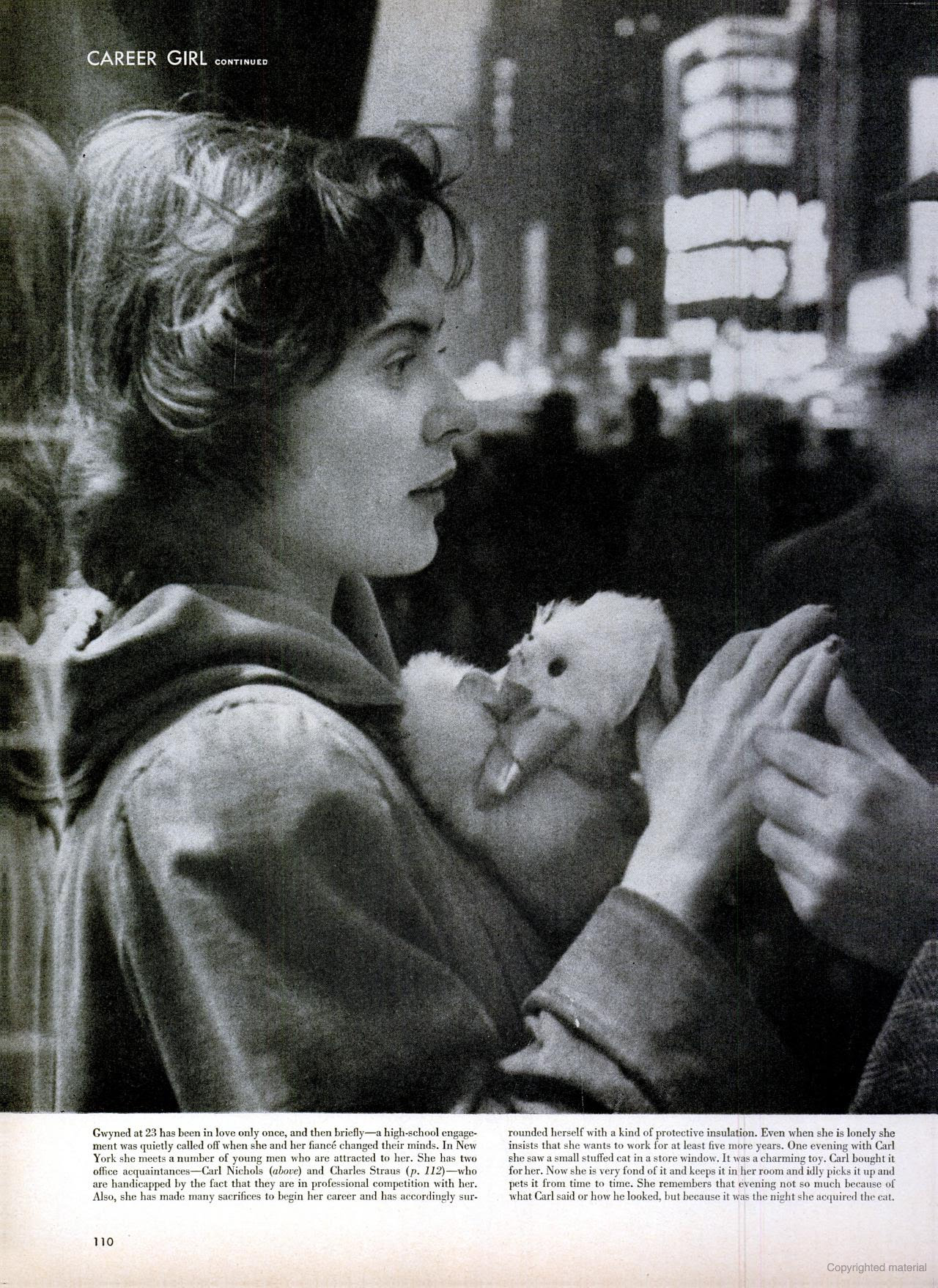
Then there are several pages about the heroine’s personal life. Gwyned has many suitors (even in her office there are two of them). Sometimes she goes out with them somewhere, but she tries not to give hope to anybody: she spent too much effort to start a career in New York to ditch it all for love and marriage. She wants to dedicate at least the next five years to work. However, deep down inside she likes one of the suitors more than the others — Charlie Straus is a talented, but an extremely shy, copywriter from her agency.
Gwyned’s suitors is a frequent topic for discussion and jokes between the young women at the agency, but they have recently been discussing her promotion and raise more, saying that it is weird that she received it only after half a year, and a certain smart and talented colleague hasn’t even after two years. Gwyned tries not to pay attention to this — what to do, such is the competition.
At the second-to-last page — a full-page photograph: Gwyned is crying on Marilyn’s shoulder. She was hoping that Charlie would invite her for an evening out like he had done on previous Saturdays. However, when Charlie called her, he didn’t say a word about plans for the weekend. She wipes her tears and swears not to talk to him again ever, and out of spite goes to have a dinner with a different suitor. When Charlie finally gathers courage to call back with an invitation, the moment has been lost.
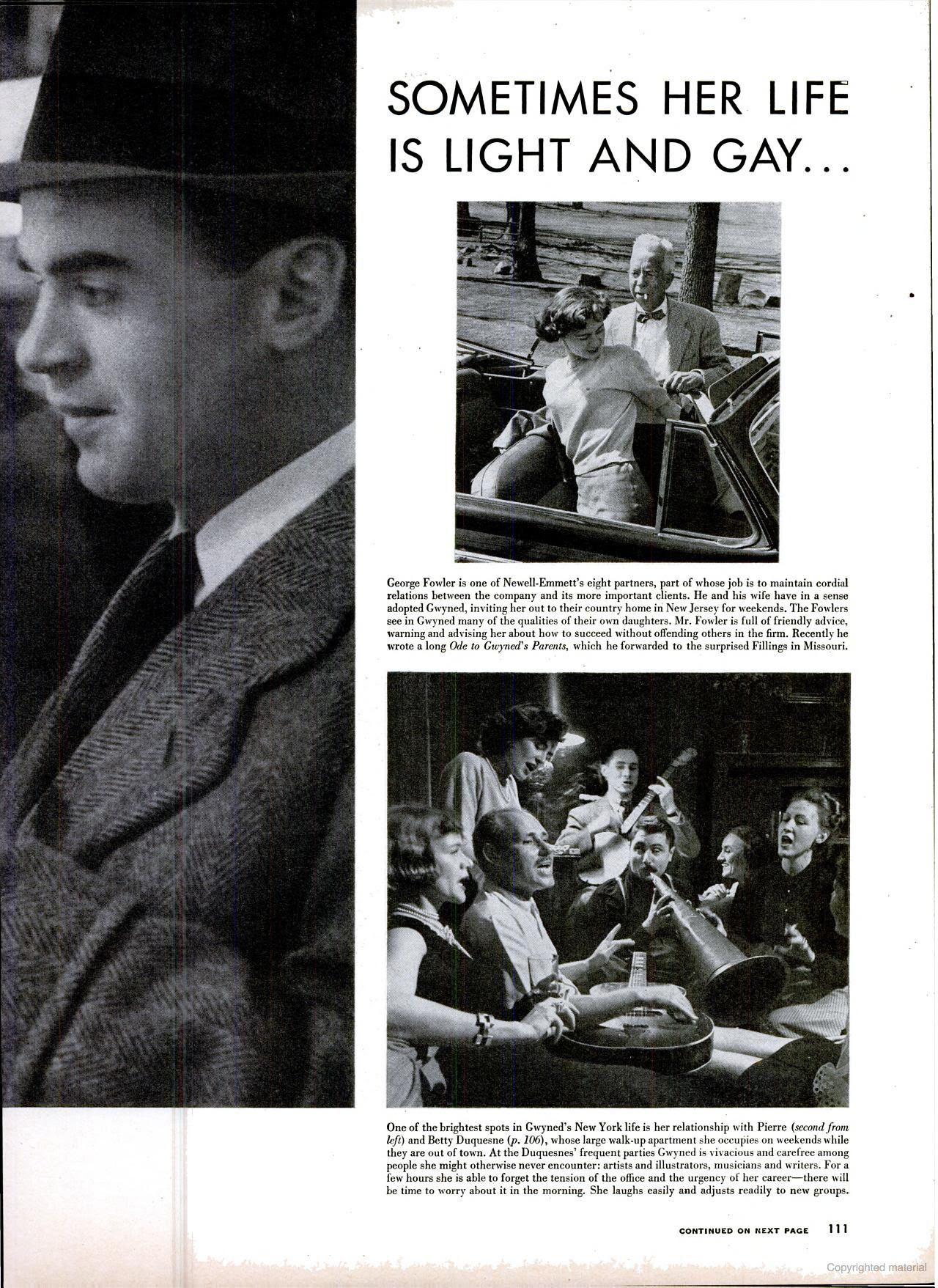
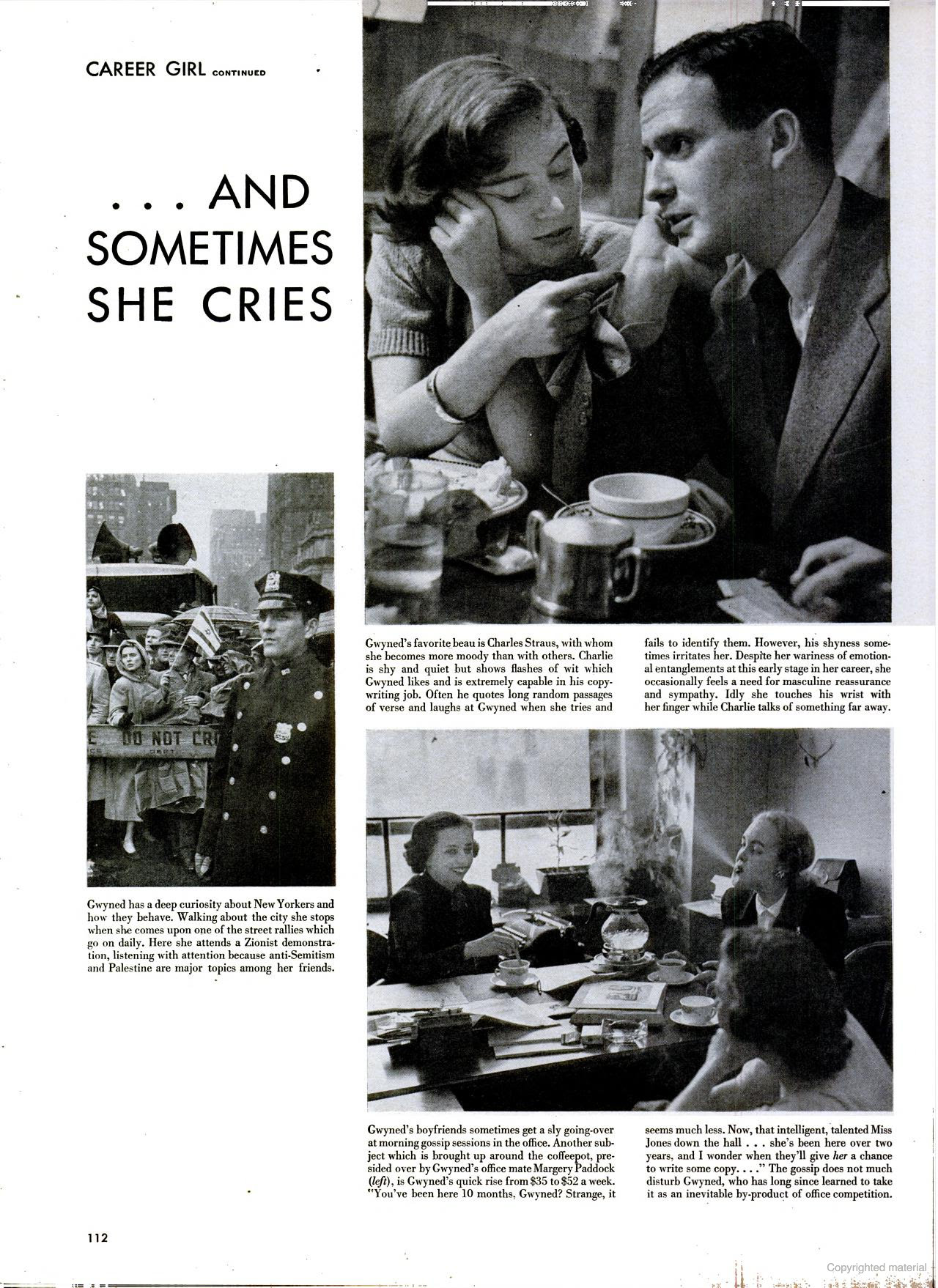
…This was the first such honest, detailed, and unbiased story about the life of young working American women. The issue was so popular that they had to reprint it almost immediately. Gwyned became a celebrity: people recognized her in the streets, asked for autographs, and sent her letters. There were rumours that Hollywood was going to make her story into a movie.
LIFE received a ton of letters. Some readers were thanking the magazine and were glad that finally a woman with a serious, determined, and smart face instead of a nondescript pretty girl with a smile was featured on the cover. Others were outraged about the ‘revealing’ photos and the non-female way of life of the heroine. A reader from Detroit said that if this story prevented at least several young women from leaving their hometowns, it would be useful at least in some way, because large cities are a threat to civilization. Many years later Gwyned recalled that many were outraged that women like her entered the ‘male business’ — not sticking to the list of socially acceptable professions: a nurse, a school teacher, a secretary, but competing with men on their territory.
LIFE received a ton of letters.
According to LIFE, the woman herself was surprisingly calm about her fame — even taking into account that appearing on the cover of that magazine in America was considered the absolute peak of popularity. The journalists recalled that she was not looking to be a public figure, but really wanted to achieve something at work, be respected for her professional qualities, and not for cover photos.
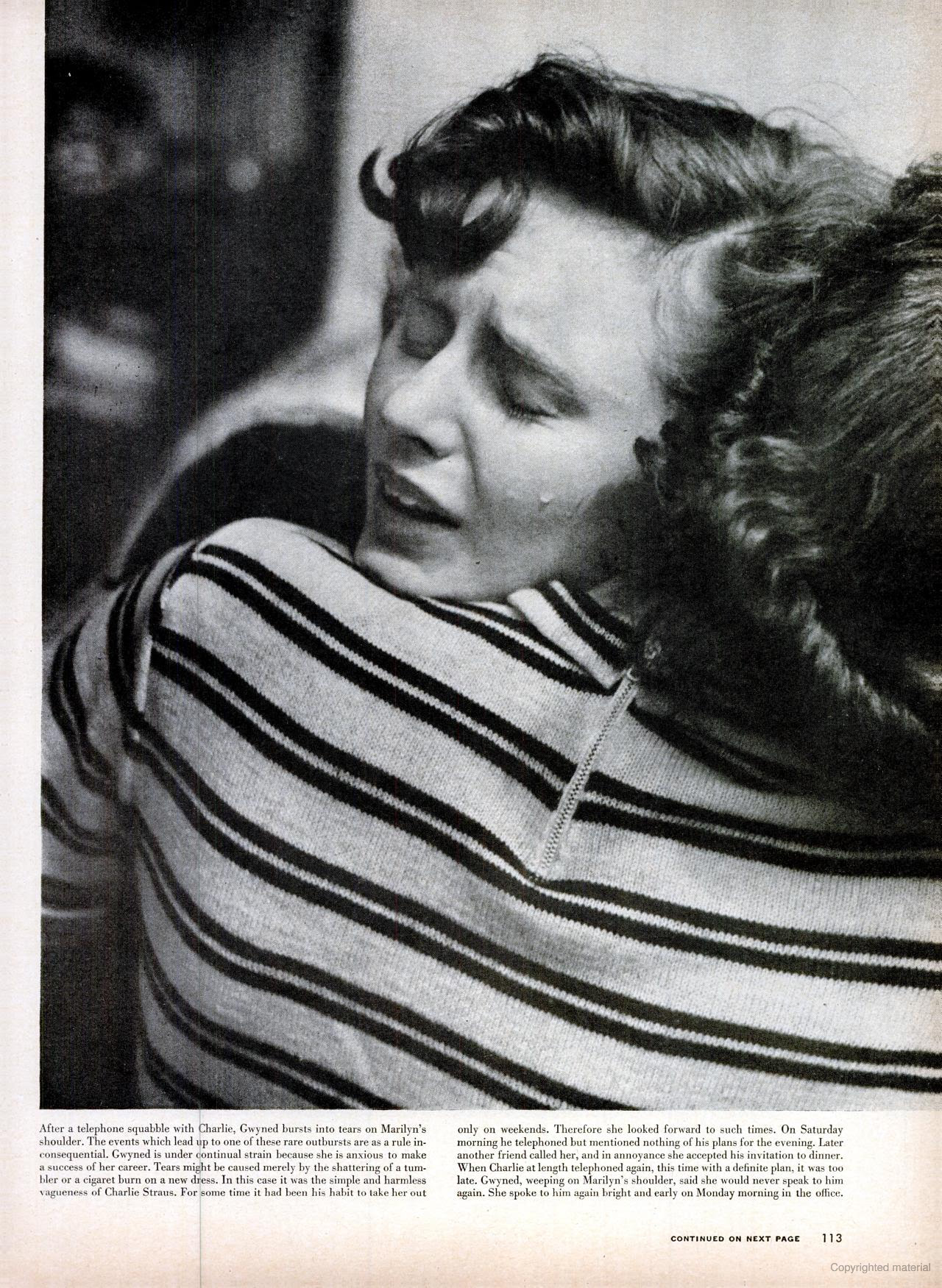
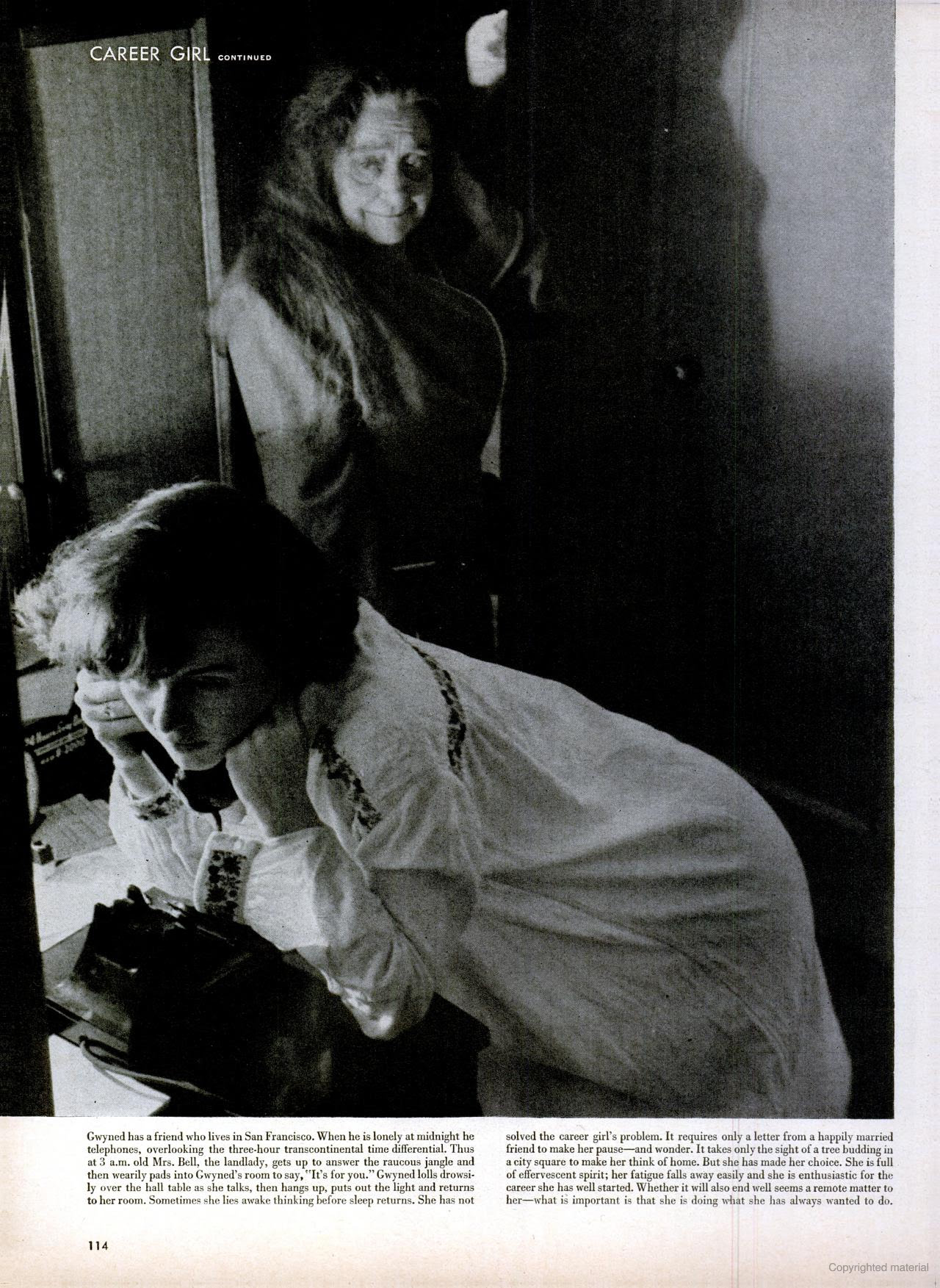
Gwyned broke the promise to postpone her personal life for at least five years before that year even ended. After the article was published, the indecisive Charlie almost immediately proposed to her. And she accepted, although this automatically ended her career at the agency, where marriage between co-workers was prohibited.
In the same year, Gwyned and Charlie got married and lived happily together for 54 years. LIFE reporters attended the wedding and published the photographs from the honeymoon — the entire country was now following the young woman’s life. Fans of the patriarchal ways were satisfied: look, we told you, all women only want to get married after all!
However, Gwyned disappointed them again. She showed at her own example that a happy marriage and raising two sons can go well together with a successful career. In the following years, she successfully worked in advertising, development, and was socially active, worked in charity organizations and even opened her own tailoring business.
New and best




